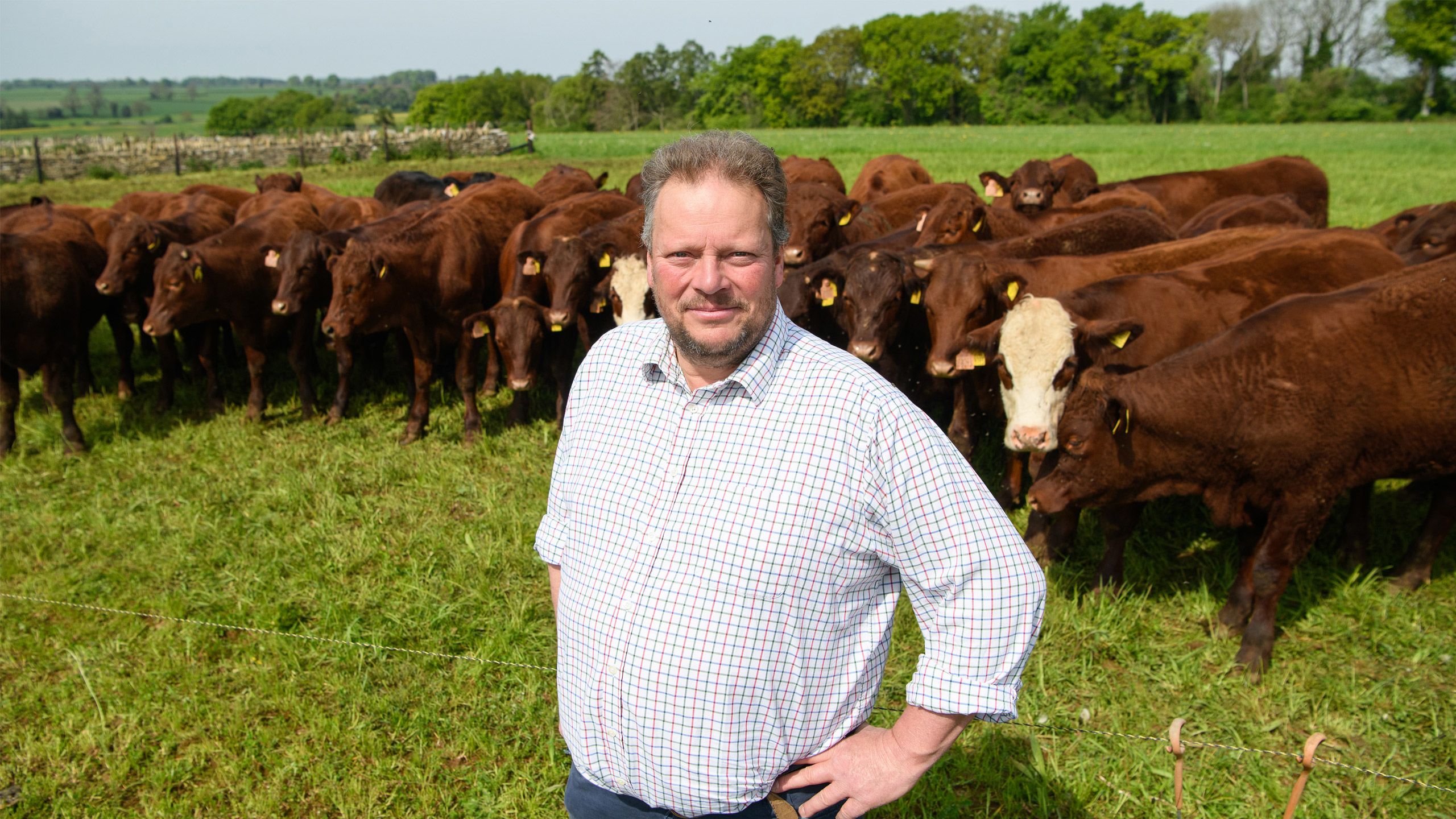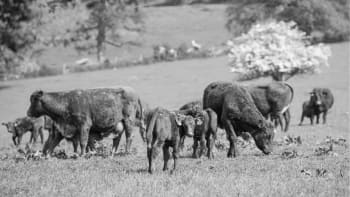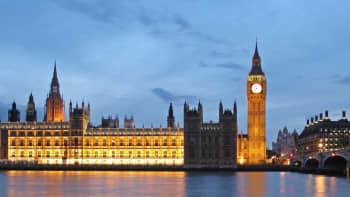Backing British Beef
Our vision for 2035
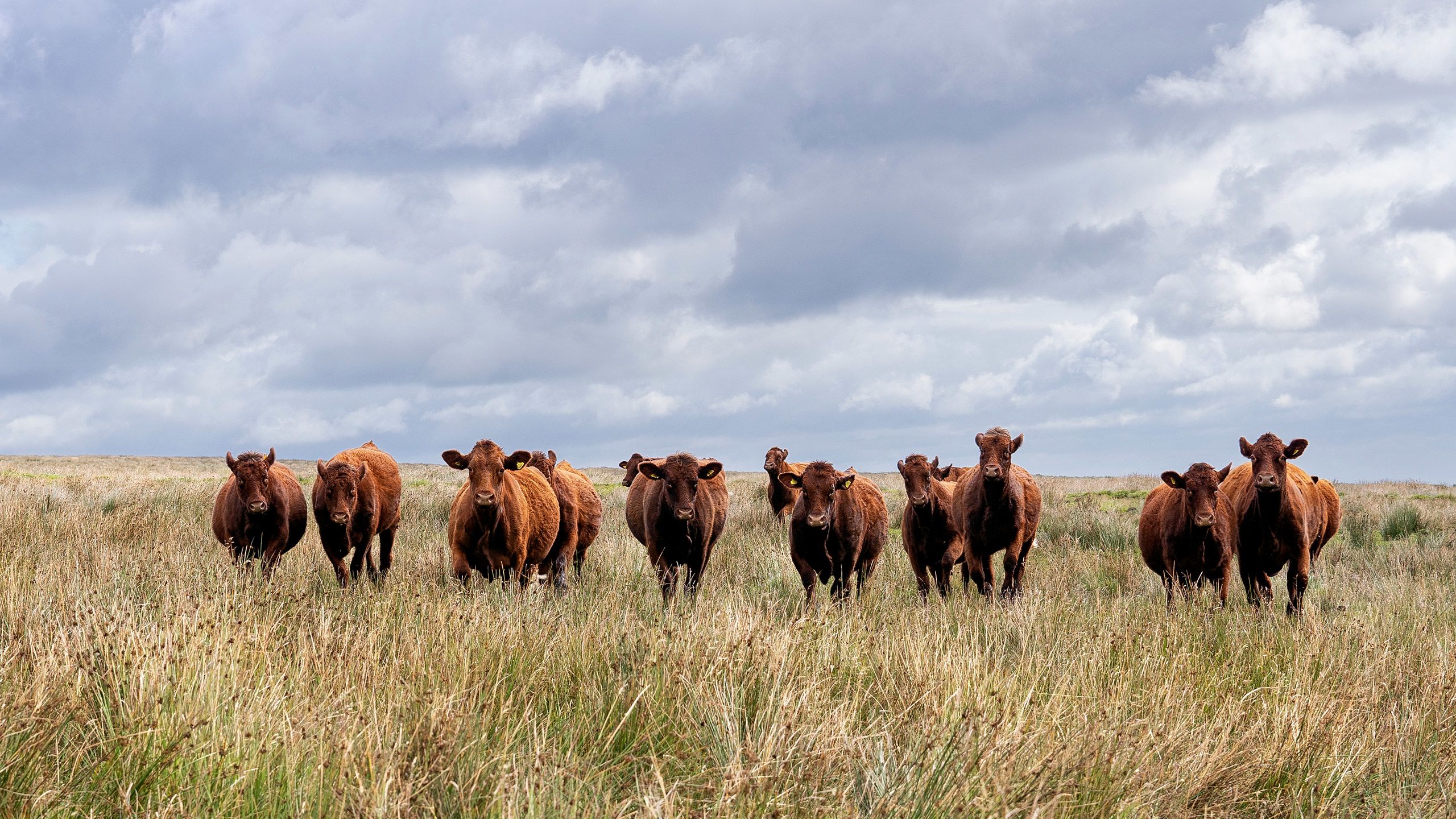
Backing British Beef
Our vision for 2035
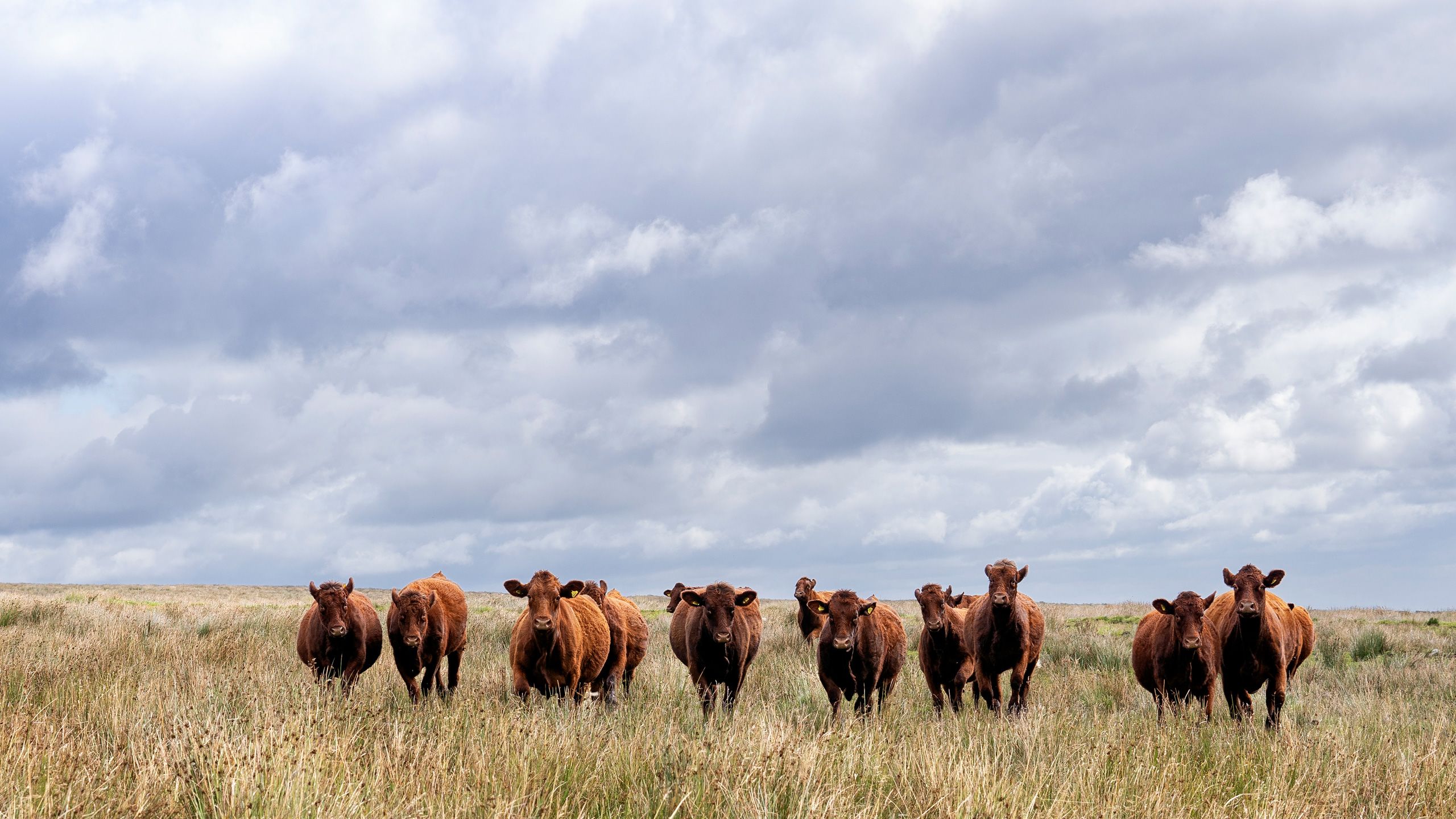
NFU Livestock Board chair David Barton
Cotswold farmer David Barton was elected as chair of the NFU's national Livestock Board in 2024. David was born and raised on his family farm in the Cotswolds where he farms a beef suckler herd. He also has a very small flock of pedigree poll Dorset sheep.
“British beef has a well-established global reputation for quality. It is produced to some of the highest animal welfare and environmental standards in the world, and is an important source of protein, vitamins and minerals.
“As a sector, we should be expanding and reinvesting, enhancing this reputation.
“But confidence in the sector is at an all-time low, especially in the suckler sector, and consequently cattle numbers are falling, despite consumer demand for beef increasing across the world.
“This drop in confidence has not been helped by the accelerated reduction of delinked payments, the closure of the SFI (Sustainable Farming Incentive) and the changes to Inheritance Tax.
“As beef farmers, we have to make our businesses more resilient to the inevitable changes in support to ensure the sector’s long-term future – a future that sees thriving, profitable businesses producing sustainable, high quality red meat for all markets at home and abroad.
“It is crucial the industry and supply chain work together to make our systems more productive and resilient.
“Taking ownership of our future and bringing the whole supply chain with us on that journey is critically important.”
“To help achieve this, the NFU Livestock Board has set out its vision for what needs to happen in the sector over the next decade.
“This vision covers sustainability, animal health and welfare standards, policy frameworks, supply chain dynamics and international trade, and outlines how and why we can grow our production.
“We know there is work to do to improve our productivity and efficiency. Taking ownership of our future and bringing the whole supply chain with us on that journey is critically important.
“With the right support, British beef farms can be profitable and thrive, both for the benefit of food security and the environment.
“We look forward to working with key stakeholders to make that happen.”
Contents
To achieve our vision, we must work together to ensure:
Sustainability, environment and climate
A beef supply chain and policy framework that works with, supports and takes an enabling approach to helping beef farmers on their sustainability journey.
Animal health and welfare
We maintain our animal health and welfare standards and protect the sector’s reputation by developing an evidence base that supports these standards, which includes demonstrating our responsible use of veterinary medicines and antibiotics.
Policy frameworks
Policy frameworks that support food production and facilitate trade.
Supply chain structure
A fair and functioning supply chain that fosters trust and provides confidence to invest.
International trade
Trade policies that ensure British beef is valued globally, new market access is secured and existing market access is maintained, our borders are protected from biosecurity threats, and trade deals do not undermine our high standards of production.
The supply and demand of British beef
The beef industry is worth £3.9 billion to the British economy1. Our maritime climate, production systems and high regulatory standards work together to help us produce high quality beef for all markets, from everyday essential mince to special occasion cuts of steak.
The UK is home to just under 9.2 million cattle and the country is 85% self-sufficient in beef2.
The sector should be in prime position to grow and expand, increasing our production to satisfy our domestic market, grow existing markets and open new markets around the world.
But confidence in the sector to invest in production is at an all-time low.
Over the past ten years, British beef cattle numbers and overall beef production has seen a gradual decline, particularly in the suckler sector, and AHDB forecasts a further 5% fall in UK beef production in 20253.
Yet this fall comes against a backdrop of record high beef prices, reflecting incredibly strong consumer demand both at home and abroad. Global beef consumption is projected to grow by 11% by 20334.
This is a huge market opportunity for British beef producers.
With British customers becoming more interested in health, sustainability and animal welfare, beef remains a staple meal choice for people and continues to feature as part of a well-rounded and balanced diet.
The Dublin Declaration5, signed by over 1,000 scientists worldwide, reemphasised the essential role red meat plays in our diet and society, and the NHS continues to recommend that red meat should form part of a balanced diet.
Consumers know that beef is nutrient dense and an essential source of protein and vitamins and minerals such as iron, zinc and vitamin B12.
Moreover, the iron, protein and zinc found in beef is more bioavailable than other sources.
Around 65% of British farmland is best suited to growing grass6, which is turned into high quality, nutrient rich meat by cattle.
Our cattle have been bred to suit this forage-based system, and we are seeing the proliferation of British cattle breeds throughout the world because of their ability to produce high quality beef from grass and conserved forage.
The pastures they graze feature hedgerows and trees which support an abundance of biodiversity and help remove and store carbon from the atmosphere.
Cattle manure increases the level of soil organic matter and acts as a more climate-friendly alternative to inorganic fertilisers, both for grassland and arable production systems.
There is also a growing body of evidence that grazed grasslands, with the right management, actively sequester and store carbon dioxide.
Beef suckler production, often combined with sheep, is the mainstay of food production in the uplands, where livestock has shaped the land over generations and helps sustain viable farming communities.
British beef is in a strong position to maintain its position as a versatile, healthy, environmentally friendly and minimally processed option for consumers.
As global consumption increases, government, industry and the supply chain must work together to ensure the British beef sector is in prime position to fulfil this growing demand.
The EUROP grid is used to classify beef carcases in the UK and Europe. The classification grade ‘R4L’ has the highest UK demand, premium prices, and the best market returns. The R indicates very good conformation, and the 4L says there is a desirable level of lean fat cover.
The EUROP grid is used to classify beef carcases in the UK and Europe. The classification grade ‘R4L’ has the highest UK demand, premium prices, and the best market returns. The R indicates very good conformation, and the 4L says there is a desirable level of lean fat cover.
The supply and demand of British beef
The beef industry is worth £3.9 billion to the British economy1. Our maritime climate, production systems and high regulatory standards work together to help us produce high quality beef for all markets, from everyday essential mince to special occasion cuts of steak.
The UK is home to just under 9.2 million cattle and the country is 85% self-sufficient in beef2.
The sector should be in prime position to grow and expand, increasing our production to satisfy our domestic market, grow existing markets and open new markets around the world.
But confidence in the sector to invest in production is at an all-time low.
Over the past ten years, British beef cattle numbers and overall beef production has seen a gradual decline, particularly in the suckler sector, and AHDB forecasts a further 5% fall in UK beef production in 20253.
Yet this fall comes against a backdrop of record high beef prices, reflecting incredibly strong consumer demand both at home and abroad. Global beef consumption is projected to grow by 11% by 20334.
This is a huge market opportunity for British beef producers.
With British customers becoming more interested in health, sustainability and animal welfare, beef remains a staple meal choice for people and continues to feature as part of a well-rounded and balanced diet.
The Dublin Declaration5, signed by over 1,000 scientists worldwide, reemphasised the essential role red meat plays in our diet and society, and the NHS continues to recommend that red meat should form part of a balanced diet.
Consumers know that beef is nutrient dense and an essential source of protein and vitamins and minerals such as iron, zinc and vitamin B12.
Moreover, the iron, protein and zinc found in beef is more bioavailable than other sources.
Around 65% of British farmland is best suited to growing grass6, which is turned into high quality, nutrient rich meat by cattle.
Our cattle have been bred to suit this forage-based system, and we are seeing the proliferation of British cattle breeds throughout the world because of their ability to produce high quality beef from grass and conserved forage.
The pastures they graze feature hedgerows and trees which support an abundance of biodiversity and help remove and store carbon from the atmosphere.
Cattle manure increases the level of soil organic matter and acts as a more climate-friendly alternative to inorganic fertilisers, both for grassland and arable production systems.
There is also a growing body of evidence that grazed grasslands, with the right management, actively sequester and store carbon dioxide.
Beef suckler production, often combined with sheep, is the mainstay of food production in the uplands, where livestock has shaped the land over generations and helps sustain viable farming communities.
British beef is in a strong position to maintain its position as a versatile, healthy, environmentally friendly and minimally processed option for consumers.
As global consumption increases, government, industry and the supply chain must work together to ensure the British beef sector is in prime position to fulfil this growing demand.
The EUROP grid is used to classify beef carcases in the UK and Europe. The classification grade ‘R4L’ has the highest UK demand, premium prices, and the best market returns. The R indicates very good conformation, and the 4L says there is a desirable level of lean fat cover.
The EUROP grid is used to classify beef carcases in the UK and Europe. The classification grade ‘R4L’ has the highest UK demand, premium prices, and the best market returns. The R indicates very good conformation, and the 4L says there is a desirable level of lean fat cover.
Sustainability, environment and climate
The British beef sector is already delivering for the environment and climate, with greenhouse gas emissions from UK beef less than half the global average7.
Defining sustainability in relation to beef production is not a simple conversation.
For the NFU Livestock Board, sustainability means a profitable, efficient and resilient food system that works with the environment and reduces our impact on the climate.
It does not mean reducing livestock numbers.
Nor does it mean offshoring emissions and importing food that is not produced to the same environmental standards as food produced here.
Productivity improvements that drive efficiencies are the most impactful way to reduce the British cattle herd’s climate footprint.
As part of this productivity drive, availability of reliable data is essential for producers to make informed management decisions.
The new multi-species LIS (Livestock Information Service) is a crucial mechanism to facilitate better cattle traceability and the sharing of data that provides extra value to producers, the supply chain and government.
By collecting statutory and non-statutory information concerning genetics, individual animal performance, and health and welfare, LIS provides an opportunity to evidence our environmental impact and enable knowledge-based trading and productivity solutions.
For example, linking LIS to supply chain data such as age of slaughter, carcase weight and grade will be essential for informing breeding decisions.
This information will tell beef farmers what management decisions are most likely to deliver efficiencies, meet market demands more quickly, and reduce emissions.
Selective breeding based on this information can reduce methane intensity by up to 24%8.
The collection of this data on LIS can also be used to support the National GHG (Greenhouse Gas) Inventory, carbon audits, and Scope 3 reporting, which is increasingly being carried out by large corporations, including banks and retailers.
91% of the diet of British beef cattle is grass and forage.
91% of the diet of British beef cattle is grass and forage.
We are concerned emissions conclusions are not as accurate as they could be due to a lack of data currently being collected.
Work needs to be done at pace to harmonise on-farm GHG accounting tools. Incentivising uptake of GHG audits through the SFI would enable industry baselining to be done.
One area where the need for reliable data is crucial is measuring the effect of the UK beef herd’s methane emissions on the climate.
We want to see all parts of the supply chain, including processors and retailers, adopt split gas warming equivalent metrics, using GWP* alongside conventional GWP100 accounting.
Adopting a unified ‘dual reporting’ approach at a national and on-farm scale provides an opportunity to contrast the two measures and build a more accurate picture of the impact of the UK beef sector on the climate.
The sole use of GWP100 in the National GHG Inventory and on-farm calculators leads to misleading conclusions about the effect of the UK beef herd’s methane emissions.
It also does not allow the industry to fully demonstrate the important progress that is being made in reducing these emissions because GWP100 aggregates several different GHGs into a single unit and estimates the warming effects over 100 years.
In contrast, a split gas warming equivalent approach (building on GWP*) enables a much more accurate estimate of temperature impact reflecting the varying lifespans of individual GHGs in the atmosphere.
Most emissions from UK agriculture are methane (over 80% for some beef systems), so getting this right is crucial.
Where only GWP100 metrics are used, we would urge a note of caution because of the dangers and limitations of using this metric alone.
For more information on what the British beef sector is doing for sustainability, visit:
- NFUonline | NFU Livestock Sector Resilience Plan
- AHDB | The Beef and Lamb Roadmap
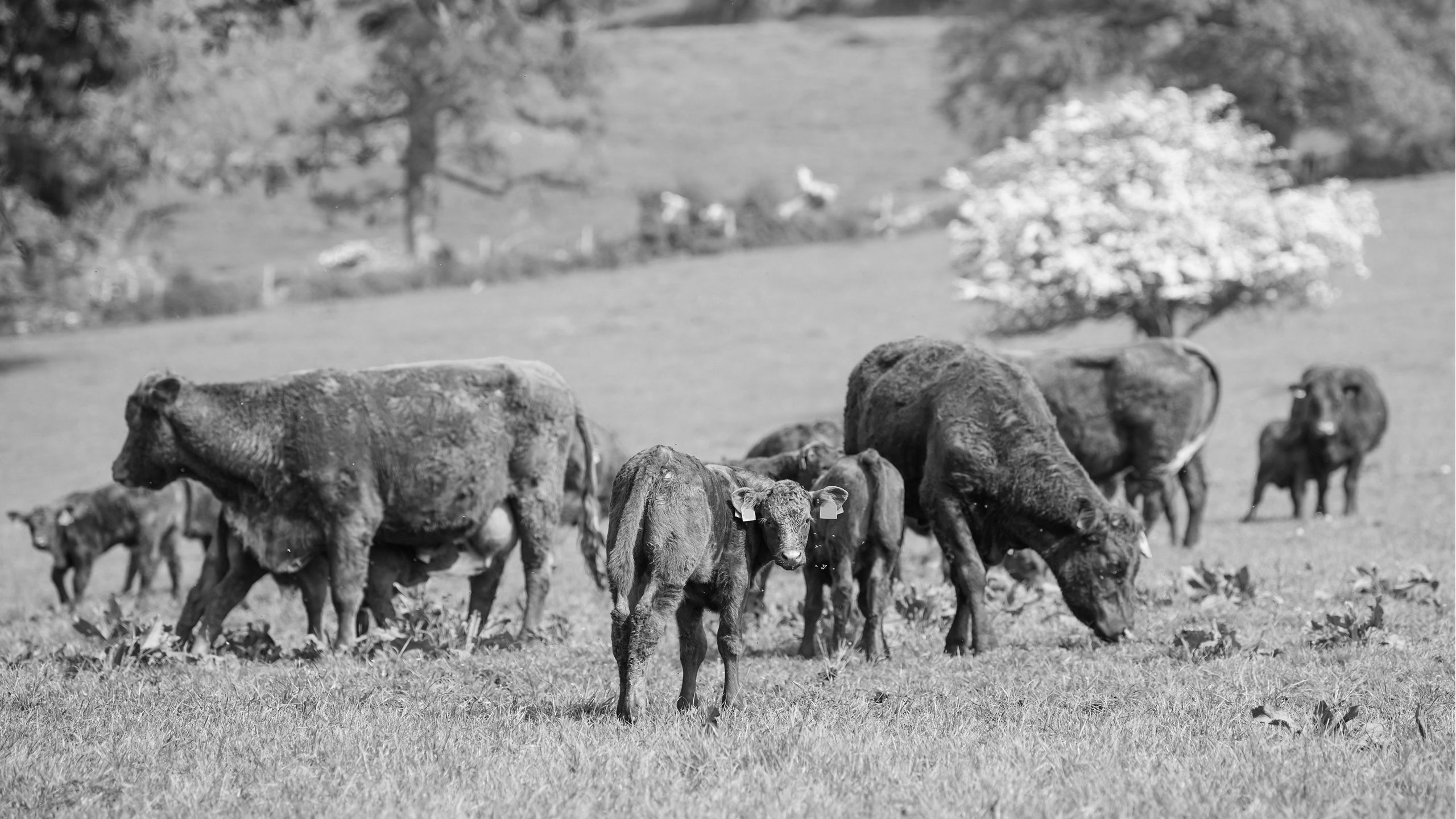
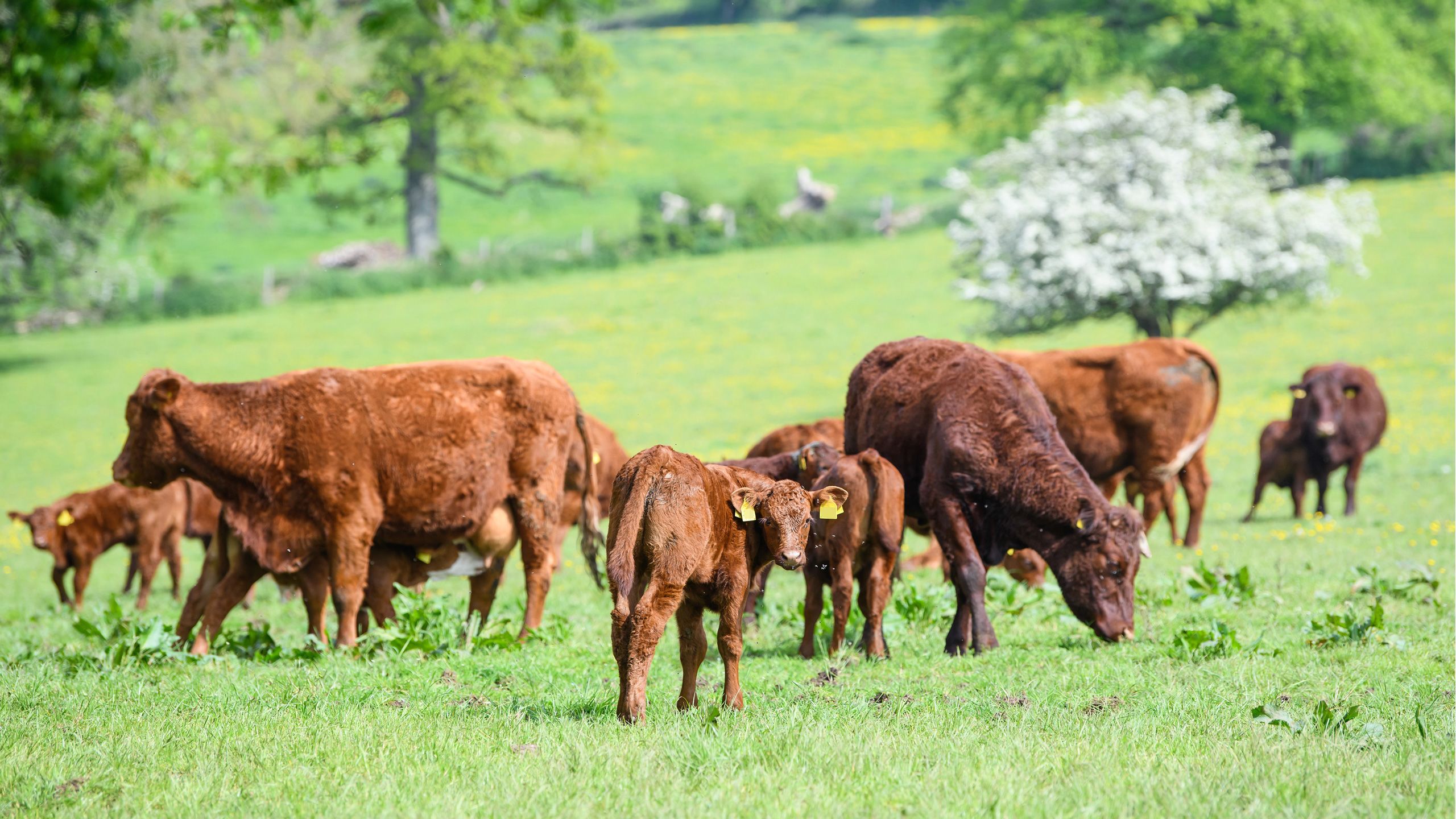
To ensure a beef supply chain that works with, supports and takes an enabling approach to helping beef farmers on the sustainability journey, we need to see:
- Government launch the new multi-species Livestock Information Service by early 2026, with the facility to share statutory and non-statutory data with all producers involved in an animal’s lifetime. This will provide value to farmers, the supply chain and government by accelerating knowledge exchange, productivity improvements, greenhouse gas emission reductions that will assist Scope 3 reporting and the National GHG Inventory, and stronger traceability.
- A time-limited national programme for every farm to access support and funding from government through a combination of the SFI and the Carbon Budget Delivery Plan for completing a GHG audit. This should include access to a qualified adviser to assist with data inputs and analysing outcomes based on the latest technology and climate research. This will assist with industry greenhouse gas baselining and ensure progress can be tracked.
- A commitment from industry, supply chain and government to use split gas warming- equivalent metrics for all reporting and modelling of the UK beef and lamb sector. We do not believe GWP100 should be used in isolation and urge the use of a note of caution where this occurs.
- Standardised carbon calculators using harmonised methodologies that best represent all beef systems and avoid huge differences in the results depending on what calculator is used.
Animal health and welfare
Britain’s animal health and welfare standards remain some of the highest in the world. But endemic diseases present a range of emotional and financial challenges for livestock businesses across the country, which limit production and economic growth, increase waste and undermine food security.
bTB (Bovine TB) continues to devastate farm businesses across the UK.
We need to eradicate bTB while maintaining and enhancing thriving livestock and dairy sectors.
The current uncertainty over how the government will approach this is bad for cattle and wildlife health, and farmer wellbeing.
Government must work with industry on a clear pathway to eradication which includes all science-based options.
Wildlife control must remain a key tool, with cattle and badger vaccination forming part of a longer-term strategy. Compensation also has a part to play.
Farmer-delivered wildlife control has delivered significant reductions in bTB rates in cattle – a 56% reduction in incidence rates9 – which have delivered huge cost savings for industry and government.
To strengthen biosecurity and facilitate a risk-based trading model, bTB status must be available at the point of sale through the LIS and the continued development of the ibTB online tool.
Incentivising and supporting investment in approved finishing units and licensed finishing units through government policy would help create a robust supply chain.
Photograph: 'Fototek' Geoff and Tordis Pagotto
Photograph: 'Fototek' Geoff and Tordis Pagotto
BVD (Bovine Viral Diarrhoea) continues to present a huge challenge and limits productivity gains in the beef sector, with estimates suggesting the disease costs the livestock sectors up to £61 million per year10.
Industry and government must work together to eradicate BVD in England. The provision of animal status at the point of sale through LIS would help achieve this.
This must be accompanied by an eradication strategy that focuses on identifying ‘persistently infected’ calves through tag and test, herd screening, regular testing, and culling to reduce transmission.
BVD eradication can also be supported by the Animal Health and Welfare Pathway. Industry and government must continue to encourage better uptake.
The Pathway could prove vital to improving the sector’s health and welfare, through the delivery of herd health plans which can help identify and address key challenges like antimicrobial resistance.
There are tight controls on the use of antibiotics in food-producing animals in the UK.
Sales have fallen by 59% since 2014, with sales of antibiotics of the highest critical importance to human health now accounting for less than 0.5% of total veterinary antibiotic sales.
This contrasts with, for example, the USA where there is no federal legislation controlling the use of antibiotics in food production animals.
Despite already being low users, the beef sector is taking positive steps to reduce antibiotic use even further.
There is a growing need to demonstrate responsible use of medicines through widespread data recording on AHDB’s eMedicine Hub, specifically due to the risk of antimicrobial resistance.
Data reporting of medicine use within the beef sector needs to be improved.
With the ongoing threat of BTV-3 (the bluetongue virus) and other serotypes, industry and government must work together to encourage vaccination.
Wider support is needed to maintain the supply of key veterinary medicines, including vaccinations, that are used to control disease.
We also need to see an adequately supported and resourced APHA (Animal and Plant Health Agency) that can respond to disease threats if, and when, they arise.
This includes laboratory capacity, IT infrastructure, and trained and competent staff resource.
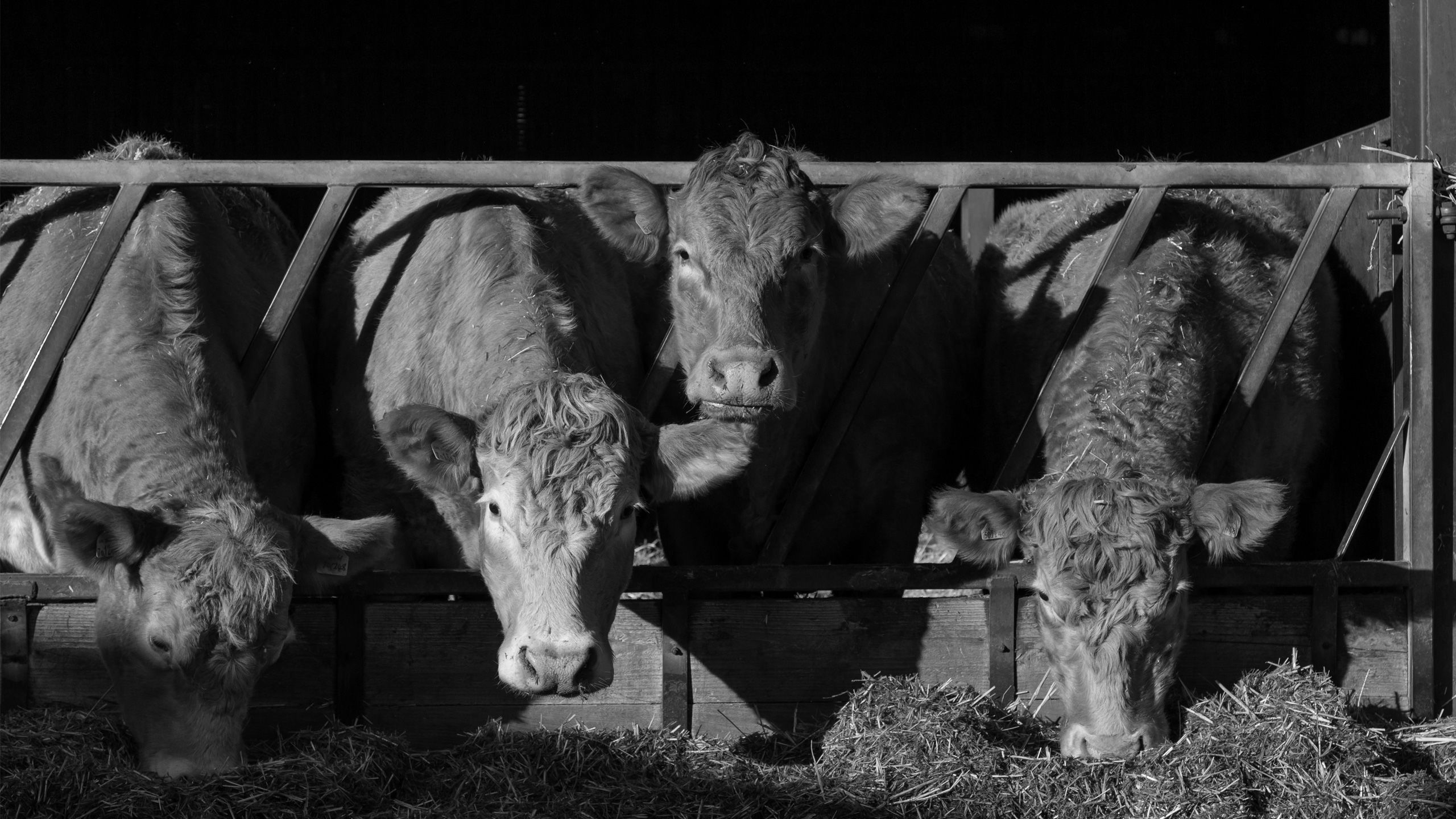
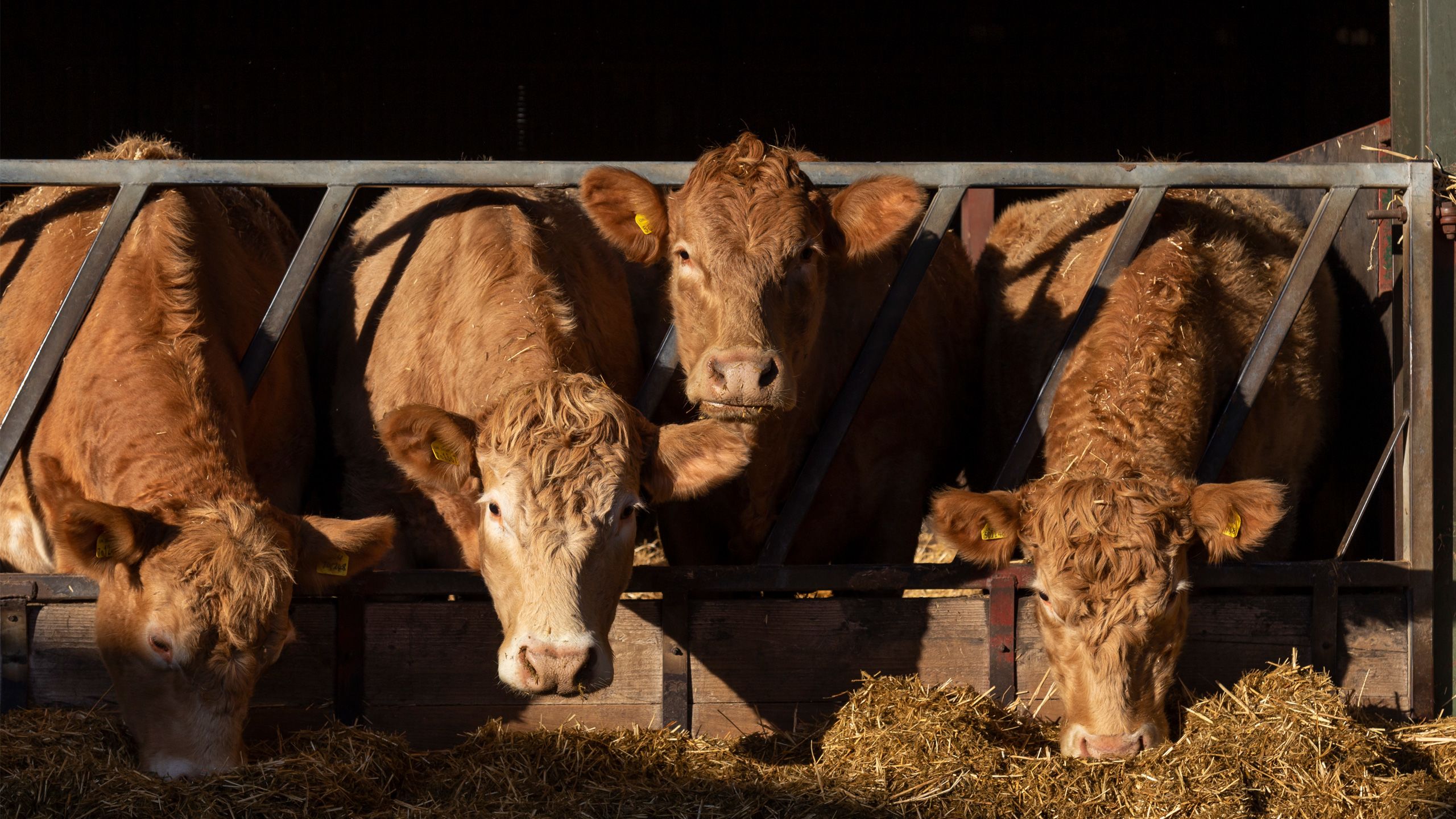
To ensure animal health and welfare standards remain high and the sector’s reputation is protected, we need:
- Government and industry to design and implement a BVD eradication strategy so that BVD free status is achieved in England by 2030.
- bTB controls put in place which are science-based, with wildlife control forming part of an effective eradication strategy, and compensation continued to be paid for animals lost to the disease.
- Industry and supply chain to use the RUMA (Responsible Use of Medicines in Agriculture) targets to reduce, refine and replace antibiotics.
- Greater use of AHDB’s eMedicine Hub to demonstrate continued progress in the responsible use of antimicrobials.
- Vaccine supply to be safeguarded to ensure farmers have the tools necessary to protect health and welfare and productivity on farm.
- The APHA to be adequately supported and resourced by government so that it can respond to disease threats as and when they arise.
Policy frameworks
The right government policy framework is critical in supporting red meat production in the UK.
More needs to be done to ensure greater transparency and fairness to support confidence in producing more food.
The EUROP grid was established in 1981 to measure conformation and fat cover for beef carcases.
Further industry discussions are needed about whether additional metrics can be established alongside the EUROP grid to reward primary producers, for example, for intramuscular fat levels.
To improve fairness, processors need to give notice to their suppliers of changes to their terms and conditions.
The voluntary Processor Code of Practice, agreed by the beef industry in 2015 to improve transparency, should be made mandatory, given statutory footing, and monitored by an independent oversight body.
This would mean all beef processors over the Beef Carcase Classification scheme threshold would have to lodge their terms and conditions and provide 12 weeks notice of any change.
This is currently not the case.
The lack of transparency regarding post-slaughter deductions applied by processors, including ‘condemnation insurance’, waste disposal and other inspection charges, also needs to be reviewed.
The BCC (Beef Carcase Classification) scheme is the primary vehicle for delivering adherence to correct dressing specifications, carcase weight and grading, which are key determinants of the price received by the producer.
The BLS (Beef Labelling Scheme) ensures product traceability through country of origin labelling, which is essential to ensure consumers are not misled.
The supply chain and government must work with the industry and the CCSC (Carcase Classification Scrutiny Committee) to ensure the correct application and robust enforcement of both schemes by the RPA and local authorities.
The CCSC is an independent industry group established to provide oversight and scrutiny of carcase dressing and classification.
The committee includes nine industry organisations from across the supply chain and devolved nations, with the AHDB, RPA and MLCSL attending as observers, and has developed its own terms of reference and reporting standard, as well an independent complaint handling procedure.
“It is crucial the industry and supply chain work together to make our systems more productive and resilient.”
David Barton, NFU Livestock Board chair
Alongside sheep, the British beef sector was the most reliant on the Basic Payment Scheme. Since Brexit, the Agricultural Transition Plan (ATP) has presented many challenges for beef producers.
The accelerated phasing out of the BPS (Basic Payment Scheme), and the push for farmers to engage with the ELMs (Environmental Land Management schemes), drove farmers to reduce livestock numbers.
Farmers’ confidence has now been hit by the halting of applications for capital grants and SFI.
Many producers will now, rightly, be looking to increase cattle numbers to make up for lost income that had been promised from SFI, but the lingering policy uncertainties will continue to hold back investment.
It is therefore vital that ATP processes and policy developments are clear, detailed and allow sufficient time for businesses to plan.
It is also crucial that the supply chain and relevant policies ensure fairness and transparency, so confidence in food production grows and profits can be made.
The Land Use Framework must recognise and support this by safeguarding farmland suited to beef production.
The right tax landscape is essential for investment and growth in beef production.
Government should halt plans to change APR and BPR (Agricultural Property Relief and Business Property Relief) to properly consult with industry to ensure any changes to Inheritance Tax avoid the break-up of family farm businesses.
Tax policy should also support low carbon and climate-friendly farming initiatives, such as new or refurbished buildings and infrastructure, fuel and energy systems, and equipment to reduce emissions and harvest rainwater.


Policy frameworks that support food production and provide confidence to invest must involve:
- Industry and supply chain exploring additional metrics to reward and incentivise primary beef producers, such as intramuscular fat.
- Government using the Agriculture Act powers to mandate a Processor Code of Practice to ensure any changes to processors terms and conditions have 12 weeks’ notice, and to deliver greater transparency of post-slaughter deductions. This must be monitored by an independent oversight body to ensure fairness in the supply chain.
- The Rural Payments Agency ensuring the BCC (Beef Carcase Classification) and BLS (Beef Labelling Scheme) are effectively applied and monitored to minimise non-compliance.
- ATP (Agricultural Transition Plan) processes and policy developments, including ELMs (Environmental Land Management schemes), being clear, detailed and with sufficient notice and timelines to allow for business planning.
- An approach to tax policy that stimulates investment by halting plans to change APR and BPR (Agricultural Property Relief and Business Property Relief) and implements incentives for low carbon and climate-friendly initiatives and equipment.
- A multifunctional Land Use Framework that manages the risk of significant competition between land use and avoids long-term or irreversible changes to the productive capacity of farmland.
Supply chain structure
TBeef producers have a range of routes to market which involve a mix of liveweight and deadweight options. However, supply chain dynamics are changing as we see greater consolidation in the processing sector.
Food production and economic growth within the sector relies on these supply chains being fair, transparent, and proportionate.
Between 2014 and 2024, there was a 31% drop in the number of approved cattle slaughterhouses in England.
Difficulty securing investment, limited access to skilled labour, falling value of fifth quarter and animal by-products, and ongoing challenges associated with the application of the FSA (Food Standards Agency’s) official controls all contributed to low margins, which have forced many small and medium sized abattoirs to close.
Photograph: Daniel Heighton / Getty Images
Photograph: Daniel Heighton / Getty Images
The future of the small to medium sized abattoir sector is a real concern. These businesses offer competition to larger operators and provide additional services, such as private kills, and support to independent retailers and hospitality.
Closures mean some regions of England now do not have enough processing capacity, which means extended travel time for animals and reduced availability of marketing opportunities for producers to add value.
The meat industry wants to work with the FSA to drive efficiencies and streamline processes in relation to the application of official controls. Addressing this will help improve service quality, reliability and deliver better value for money.
Small and medium sized abattoirs, many of which already struggle with the rising costs of compliance and operational overheads, would see the most benefit from this streamlining, alongside the continuation of the discount scheme for lower throughput abattoirs.
The GB Calf Strategy has successfully created a growing market for dairy bull calves. As a result, dairy-bred beef calf registrations rose by 77% over the ten years to 2024.
In 2024, 37% of GB prime cattle slaughter was dairy-bred. Many of these cattle are moving through the supply chain within integrated beef schemes.
In 2024, the NFU released an Integrated Dairy-Beef Contract Business Guide which outlines key questions that should be considered before entering contracts, so farmers feel more confident, informed and better able to negotiate fairer contracts.
Finance and finished pricing schemes could support beef production. These are already seen within the integrated dairy- beef schemes, but they could also be of value in the suckler beef sector.
While cattle numbers are falling overall, the fall is most steep within the suckler herd. Confidence must be rebuilt.
Such schemes must be transparent and equitable and give producers confidence to invest in food production over the medium term. This will build resilience and continuity of supply into UK processors and retailers.
Assurance schemes support access to a range of markets and underpin standards in a range of beef systems.
RT (Red Tractor) is the most common scheme for beef producers in England. The RT Beef and Lamb Scheme must be proportionate, make use of modern- day technology, and ensure audits are smarter and more efficient to encourage more producers into assurance.
Photograph: Marcus Harrison - food / Alamy Stock Photo
Photograph: Marcus Harrison - food / Alamy Stock Photo
The costs and work associated with assurance schemes must be shared across the supply chain and deliver market access that differentiates British in the marketplace. Ultimately, there must be tangible positive change for farmers.
Industry and supply chain must carefully consider if WLA (whole life assurance) is necessary for the beef sector. If WLA was to be delivered, it would disrupt current trading practices.
The longer- term ambition is to deliver WLA to support consumer confidence in product standards, but this is dependent on all assurance schemes, not just Red Tractor, delivering a scheme with a vastly improved audit experience and better engagement with producers.
Any move to WLA in the near future must be incentivised by the supply chain.
The beef sector may move at different speeds on WLA, with dairy-beef integrated schemes potentially trialling it as many dairy farmers are assured, as are many beef finishers.
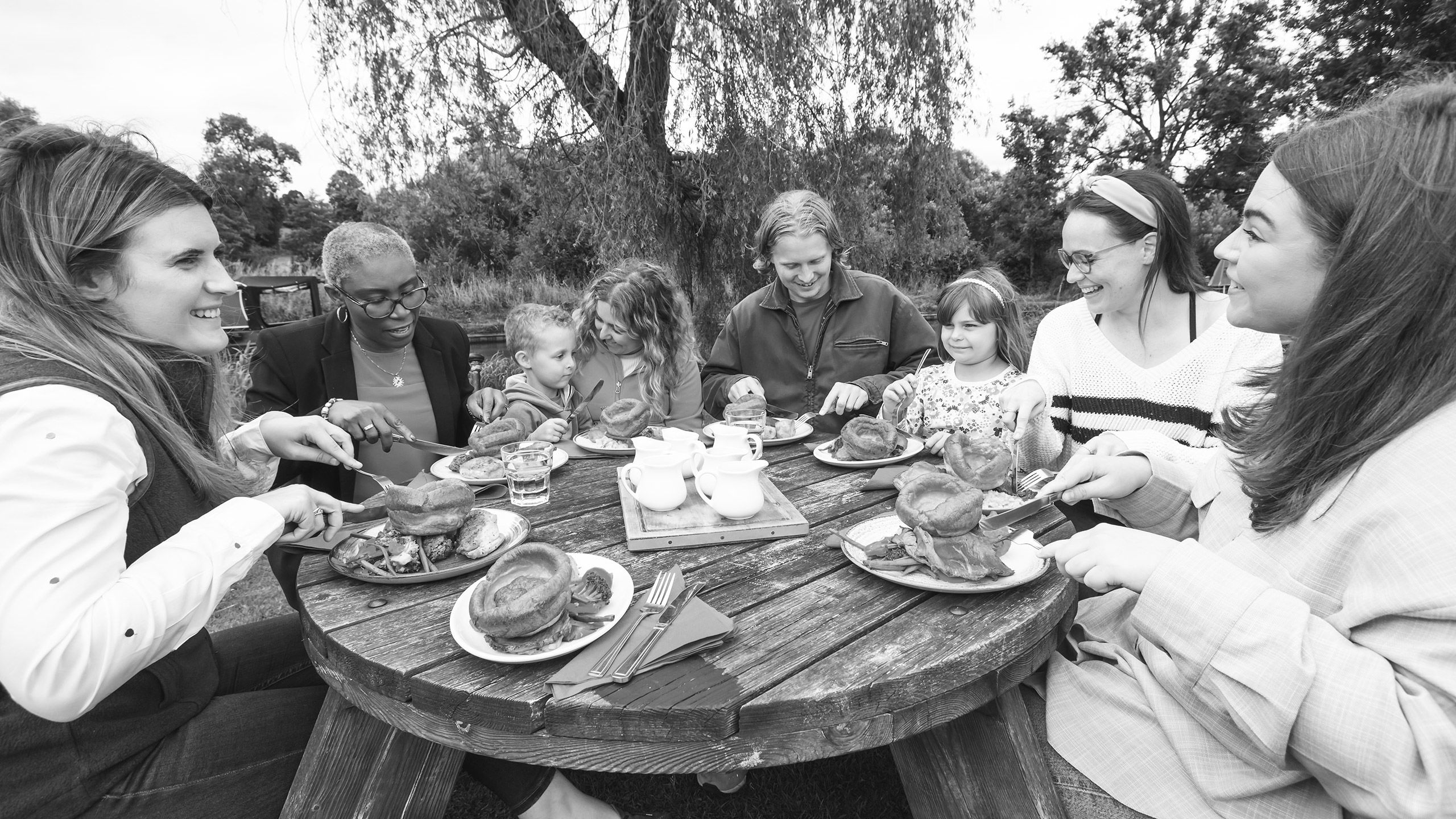
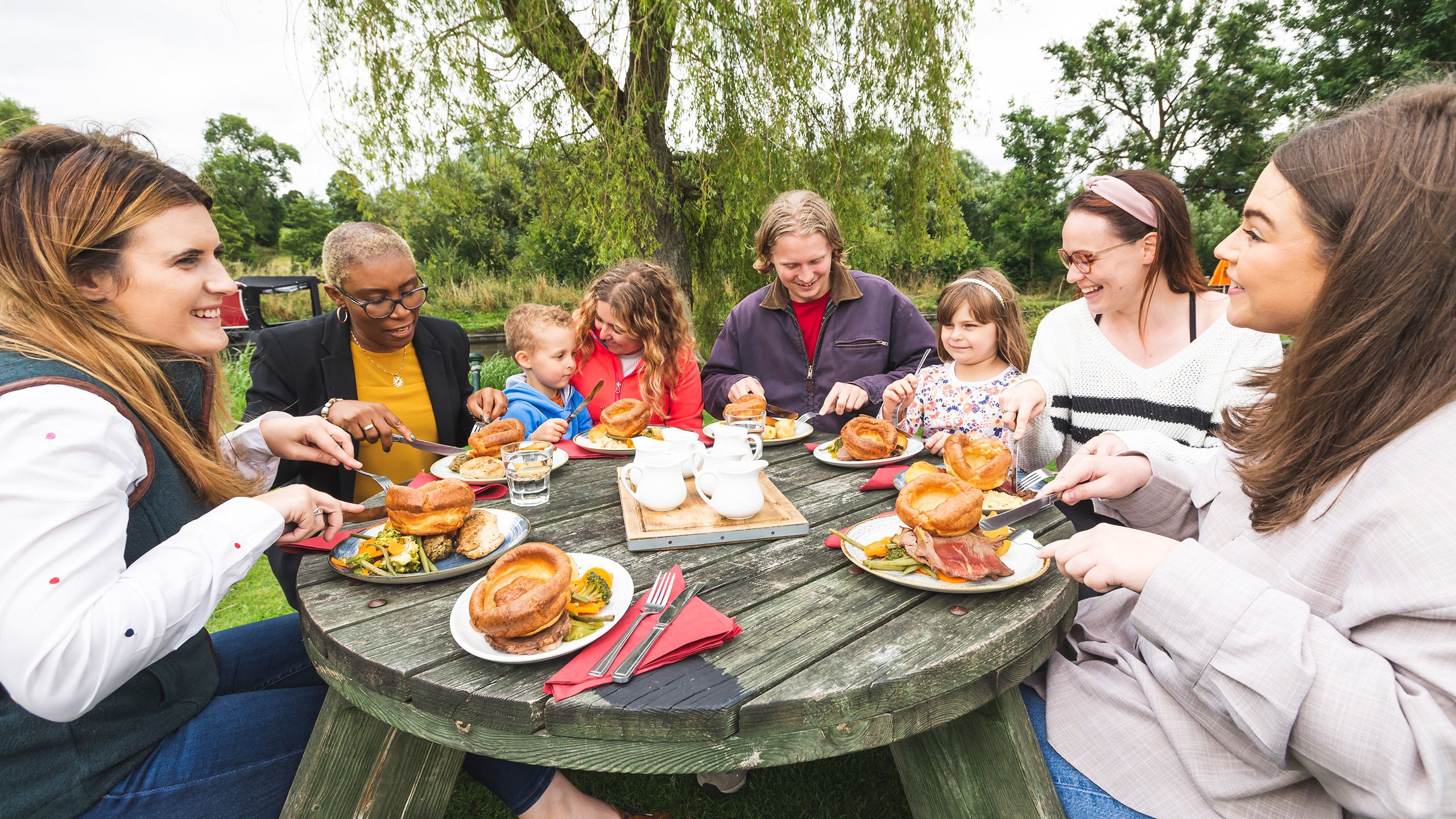
Supply chain structure
TBeef producers have a range of routes to market which involve a mix of liveweight and deadweight options. However, supply chain dynamics are changing as we see greater consolidation in the processing sector.
Food production and economic growth within the sector relies on these supply chains being fair, transparent, and proportionate.
Between 2014 and 2024, there was a 31% drop in the number of approved cattle slaughterhouses in England.
Difficulty securing investment, limited access to skilled labour, falling value of fifth quarter and animal by-products, and ongoing challenges associated with the application of the FSA (Food Standards Agency’s) official controls all contributed to low margins, which have forced many small and medium sized abattoirs to close.
Photograph: Daniel Heighton / Getty Images
Photograph: Daniel Heighton / Getty Images
The future of the small to medium sized abattoir sector is a real concern. These businesses offer competition to larger operators and provide additional services, such as private kills, and support to independent retailers and hospitality.
Closures mean some regions of England now do not have enough processing capacity, which means extended travel time for animals and reduced availability of marketing opportunities for producers to add value.
The meat industry wants to work with the FSA to drive efficiencies and streamline processes in relation to the application of official controls.
Addressing this will help improve service quality, reliability and deliver better value for money.
Small and medium sized abattoirs, many of which already struggle with the rising costs of compliance and operational overheads, would see the most benefit from this streamlining, alongside the continuation of the discount scheme for lower throughput abattoirs.
The GB Calf Strategy has successfully created a growing market for dairy bull calves. As a result, dairy-bred beef calf registrations rose by 77% over the ten years to 2024.
In 2024, 37% of GB prime cattle slaughter was dairy-bred. Many of these cattle are moving through the supply chain within integrated beef schemes.
In 2024, the NFU released an Integrated Dairy-Beef Contract Business Guide which outlines key questions that should be considered before entering contracts, so farmers feel more confident, informed and better able to negotiate fairer contracts.
Finance and finished pricing schemes could support beef production. These are already seen within the integrated dairy- beef schemes, but they could also be of value in the suckler beef sector.
While cattle numbers are falling overall, the fall is most steep within the suckler herd. Confidence must be rebuilt.
Such schemes must be transparent and equitable and give producers confidence to invest in food production over the medium term. This will build resilience and continuity of supply into UK processors and retailers.
Assurance schemes support access to a range of markets and underpin standards in a range of beef systems.
RT (Red Tractor) is the most common scheme for beef producers in England. The RT Beef and Lamb Scheme must be proportionate, make use of modern- day technology, and ensure audits are smarter and more efficient to encourage more producers into assurance.
The costs and work associated with assurance schemes must be shared across the supply chain and deliver market access that differentiates British in the marketplace. Ultimately, there must be tangible positive change for farmers.
Industry and supply chain must carefully consider if WLA (whole life assurance) is necessary for the beef sector. If WLA was to be delivered, it would disrupt current trading practices.
The longer- term ambition is to deliver WLA to support consumer confidence in product standards, but this is dependent on all assurance schemes, not just Red Tractor, delivering a scheme with a vastly improved audit experience and better engagement with producers.
Any move to WLA in the near future must be incentivised by the supply chain.
The beef sector may move at different speeds on WLA, with dairy-beef integrated schemes potentially trialling it as many dairy farmers are assured, as are many beef finishers.


A fair and functioning supply chain that fosters trust, provides confidence to invest, and offers competition and a range of marketing options would be supported by:
- Industry and the FSA working together to streamline and minimise the financial burdens of the application of FSA official controls on abattoirs, particularly for the benefit of small and medium sized operations.
- Dairy-beef integrators being open with and working with farmers to ensure profitable businesses can be maintained. Operating with the NFU’s Integrated Dairy-Beef Contract Business Guide would ensure all those involved in such contracts are benefitting from the agreement in a fair and transparent manner.
- Red Tractor taking on board all the recommendations from the Farm Assurance Review (published January 2025) to deliver a beef and lamb scheme that has a smarter audit, adds value, and secures market access.
- The beef processing and retail sectors exploring and further developing finance and finished pricing models that could support suckler beef schemes, alongside existing integrated schemes
International trade
The NFU has a goal to grow overall UK agri-food exports by 30% to over £33 billion by 2030. In 2024, the UK exported 113,000 tonnes of fresh and frozen beef, worth over £567 million, while more than 241,000 tonnes were imported into the UK11, mostly from the EU, with Ireland filling the lion’s share.
As a result of post-Brexit FTAs (Free Trade Agreements), imports of fresh and frozen beef from Australia and New Zealand have risen significantly, with more than a 100% increase in imported volumes from both countries between 2023 and 2024 worth £70 million12.
The NFU is concerned that the government may enter into new trade deals that increase access to the UK market for our most sensitive sectors, like beef, as was the case with the Australia and New Zealand FTAs.
We urge the government to protect our sensitive sectors in negotiations and stop the import of products produced to lower regulatory, environmental, and welfare standards which create an unlevel playing field and erode confidence among UK farmers.
To combat this, core production standards must be established and applied to imported products ahead of any FTA negotiations. At a minimum, they should cover environmental and animal welfare standards that we are legally obliged to follow.
The UK exported 113,000 tonnes of beef products in 2024. Photograph: Getty Images
The UK exported 113,000 tonnes of beef products in 2024. Photograph: Getty Images
The EU is our largest and most valuable beef market, taking 78% of our total export volume which was worth 86% of our total beef export value in 202413.
Government and industry must work together to maintain this trading relationship and reduce friction at the border. A key non-tariff barrier on trade with the EU, Export Health Certificates, could be mitigated by an ambitious UK-EU veterinary agreement.
As global demand for red meat continues to rise, driven by population growth and growing affluence in developing countries, non-EU markets present significant opportunities for export growth, specifically in fifth quarter products, including heart, kidneys, tongue and tripe.
Government and industry collaboration is essential to securing access to priority markets including China, the Middle East and South Korea. A review of the BSE regulation which allows the UK to apply for ‘negligible risk’ status would help bolster the UK’s reputation and expand access to new international markets.
Marketing and promotion are also key to increasing trade in British products. The agricultural attaché network must continue to grow and be given the right support and tools to champion British agri-food. These attachés play a pivotal role in removing international trade barriers and expanding market access for British producers.
AHDB should continue to invest levy payers’ money wisely to promote British beef internationally and provide valuable market insights that direct exporters to optimal markets. Government can support export growth by match funding levy payers’ contributions.
It is unacceptable that we risk the introduction of exotic disease through food fraud and illegal meat entering the UK. Government must maintain an absolute commitment to ensuring effective, proportionate and well-funded border control measures are in place, and that sufficient enforcement is dedicated to stamping out illegal activity.


Maximising trade opportunities to secure access to new markets, maintain existing market access, protect our borders from biosecurity threats and guarantee fair trade deals requires:
- Defra to continue working to change our BSE status from ‘controlled’ to ‘negligible’. This will ease processing requirements and improve access for British beef to more international markets.
- The establishment of core production standards which are applied to imported products ahead of any free trade agreement negotiations to prevent domestic primary producers from being undermined.
- Government to invest in export growth in priority beef markets such as China, the Middle East, and South Korea by match funding AHDB’s levy payer’s contribution and further expanding the agri-attaché network.
- An ongoing government commitment to ensuring effective, proportionate and well-funded border control measures are in place, and that sufficient resources are dedicated to stamping out illegal activity. This is essential for safeguarding our biosecurity.
- The government looking at the merits of UK-EU veterinary alignment and how this would improve the competitiveness of British beef businesses.
The value of British beef
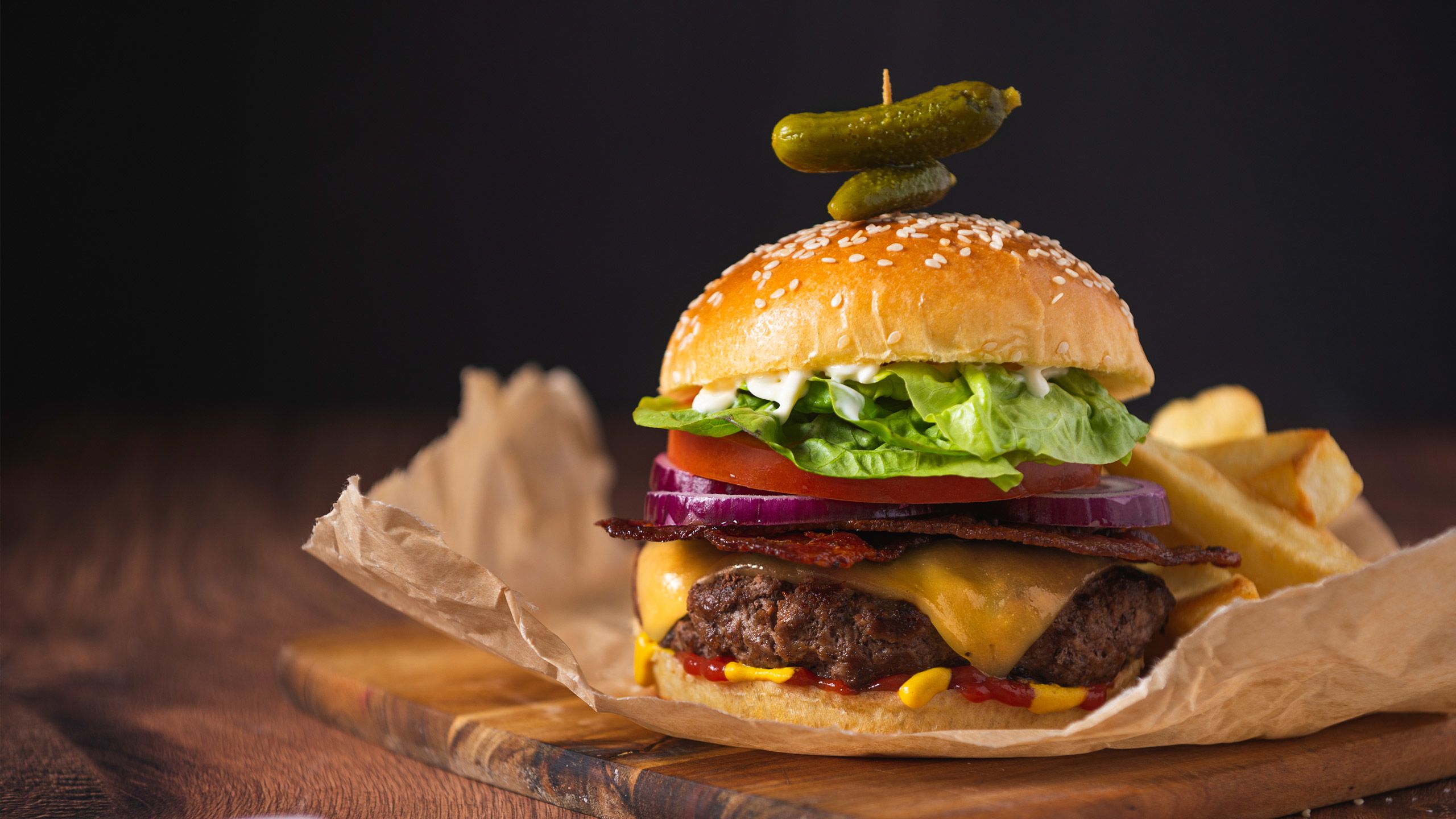
References
- Agriculture in the UK 2023, Defra, chapter 8: Livestock
- Agriculture in the UK 2023, Defra, chapter 14: The food chain
- Beef market outlook, AHDB website, February 2025
- What’s the long-term outlook for beef and sheep meat consumption? AHDB website, October 2024
- Dublin Declaration of Scientists on the Societal Role of Livestock, Dublin Declaration, 2022
- Agricultural land use in the United Kingdom at 1 June 2024, Defra website – updated March 2025
- Land use: policies for a net zero UK, Committee on Climate Change, January 2020
- Selective breeding as a mitigation tool for methane emissions in dairy cattle, Science Direct, December 2021
- Difference in differences analysis evaluates the effects of the badger control policy on bovine tuberculosis in England, Birch et al, Scientific Reports, February 2024
- BVD Stamp it Out project extended, SRUC website, October 2020
- 2024 beef trade review, AHDB website, February 2025
- Overseas trade data table, HMRC, 2025 (Fresh and frozen beef under HS codes 0201 and 0202 from 2023-2024)
- Beef trade, AHDB website – correct as of November 2024
Other sources
Livestock populations in the United Kingdom, Defra, 2024
Per capita meat consumption by type, 2021, Our World in Data, 2024
The facts about British red meat and milk, NFU, 2023
The Eatwell Guide, NHS, 2025
Beef and Lamb Environmental Roadmap, AHDB, 2025
Explainer GWP* methane accounting, NFU, 2023
The Medicine Hub for dairy, beef and sheep farmers, AHDB, 2022
Animal Health and Welfare Pathway, Defra, 2025
Bovine viral diarrhoea (BVD), AHDB
Approved Food Establishments in England and Wales, FSA, 2024
GB Dairy Calf Strategy 2020-2023, AHDB, 2020
How much beef is produced from the GB dairy herd?, AHDB, 2024
NFU integrated dairy beef contract business guide, NFU, 2024
Farm Assurance Review, Promar, 2025
NFU Red Meat Export Strategy, NFU, 2022
UK Beef imports and exports, AHDB, 2025
